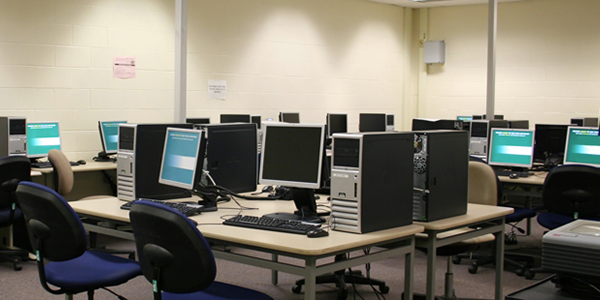Updating your school’s PCs might seem like a costly affair, but the benefits to both the school and the students make it a worthy investment. Here’s how to make the upgrade on a budget.
Why update?
If your school’s PCs are getting on in years, it’s probably time to consider an update. Fresh hardware will not only run faster, it’ll come with updated software too, meaning more features and enhanced learning for pupils. Up-to-date software will also bring better security provisions, protecting the data of both students and the school.
But this can be an expensive business. Keeping your PCs up-to-date means regular updates every couple of years, or they risk becoming obsolete. New technology also requires frequent retraining, for both staff and pupils, to ensure the computers are used to their full potential.
The good news is, keeping up-to-date doesn’t have to cost the earth. Schools simply have to get creative when it comes to sourcing modern hardware for their students.
Making Cents
Many computer manufacturers offer leasing programs for schools that are cheaper than buying the hardware outright. In some cases, they’ll let you buy the computers at the end of the lease for far less than the standard purchase price.
For example, Southern Cross University in NSW leases its IT equipment and says this way of working is more efficient, and allows it to effectively manage its computer fleet and associated costs.
Another cost-saving strategy is for schools to only buy what they need. Think about what your PCs will be used for. This will help you narrow down the specs you need and where you can save money. For instance, powerful processors might help your computers run the latest games and high resolution video, but it’s wasted money if all you need them for is word processing and emailing.
Do you also need fancy graphics cards? Massive storage? Advanced sound cards? If not, cut them out. The savings will soon add up.
The Coding Challenge
When you think of a desktop computer, you probably think of a tower PC. But there are smaller, cheaper alternatives around. They look like circuit boards and are small enough to fit in your pocket, but they’re fully fledged desktop PCs. All they need is a monitor, mouse and keyboard, and they can handle most of the basic tasks of a ‘proper’ PC.
These cheaper devices are great for teaching students about coding. Some schools, such as Sydney’s Darlington Public School, have made coding a stand-alone subject, giving students a competitive edge in the digital marketplace.
Without the right hardware, you’re limiting your students’ learning potential. Invest wisely, however, and they’ll have a head start in the world of tomorrow.



.png)


